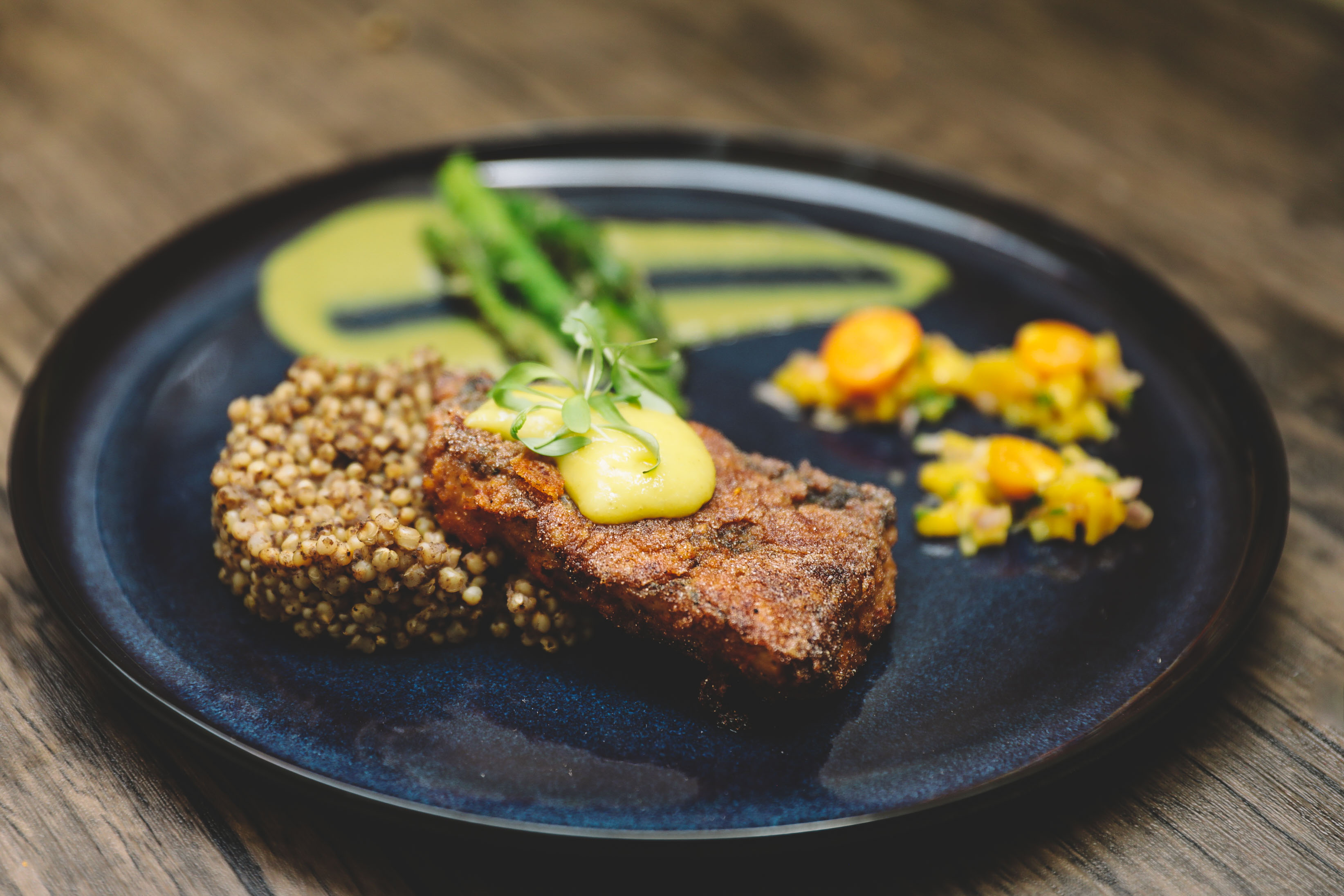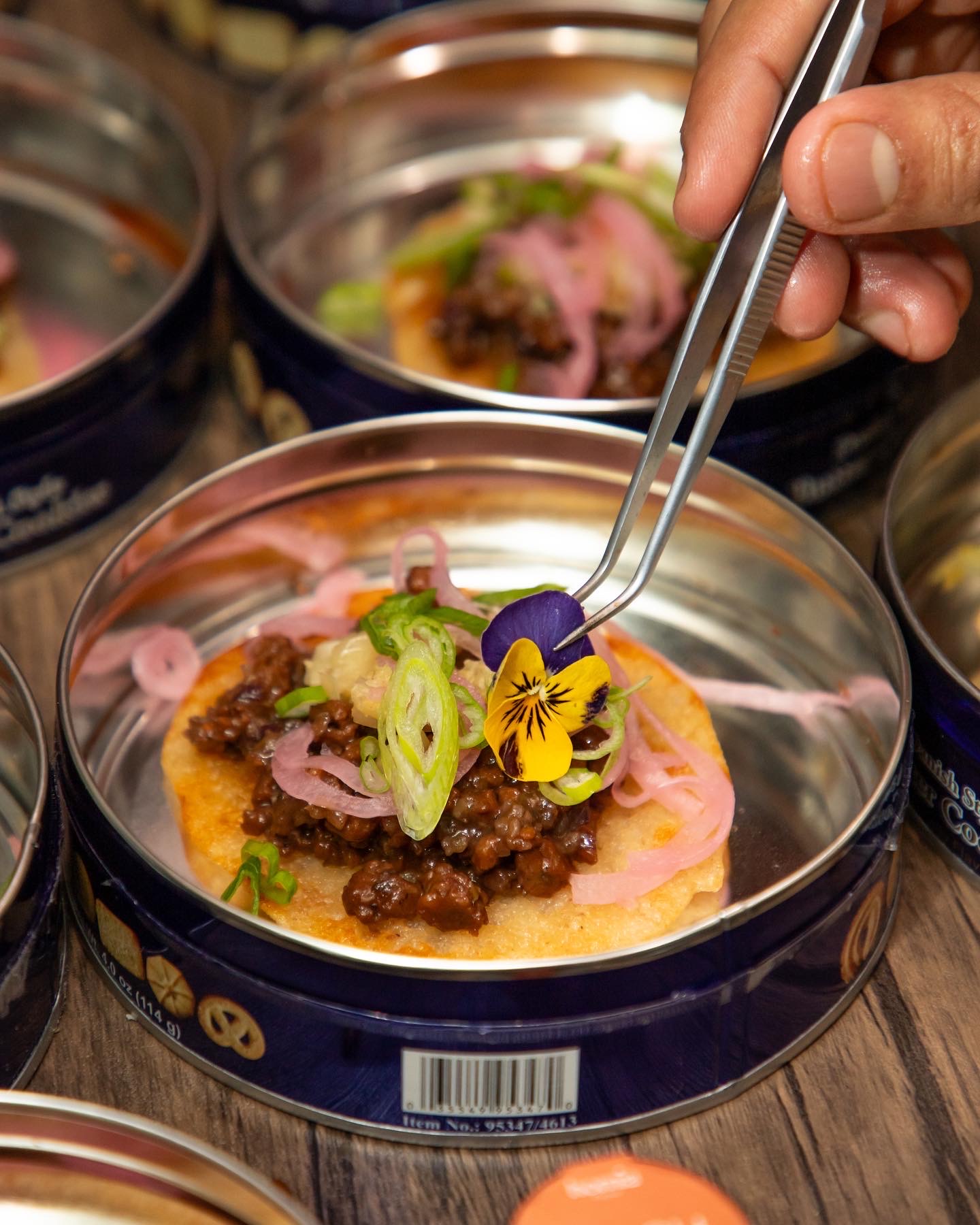Food
Taking Nepali taste to New York
Chef Aditya Mishra discusses his restaurant in the Big Apple, serving Nepali cuisine there and the recipe for his signature dish.
Aarati Ray
Aditya Mishra is a Nepali chef and entrepreneur based in New York. Passionate about elevating Nepali cuisine globally, Mishra sharpened his culinary skills while staging at various Michelin-starred restaurants in the city during his time at culinary school. A recipient of the James Beard Foundation National Scholars Scholarship in 2023, Mishra’s early experiences inspired him to establish his own supper club, ‘The Sewing Tin’, alongside co-founder Akhil Upad.
In an interview with Post’s Aarati Ray, Mishra discusses his restaurant in New York, serving Nepali cuisines there and the recipe for his signature dish.
How did your cooking journey start in New York?
At 14, I told my parents I wanted to be a chef, but they preferred I pursue a stable career like engineering, as many Nepali families do. So, I left for Louisiana in 2019 to study engineering.
But, cooking never left my heart so, after a year, I left engineering college and moved to New York City. It’s been three and a half years and my parents only learned about it later. When my mom visited me in NYC and saw my dedication to cooking, she saw my passion and supported my decision.
What sparked your interest in cooking from a young age?
As a child, I was drawn to cooking shows on TLC. The glamour of cooking, eating, travelling and the prosperity of famous chefs was fascinating.
Around age 16, I discovered Chef Anthony Bourdain’s groundbreaking book, ‘Kitchen Confidential’, which shed light on the reality of the culinary industry. I learned how he became a cultural icon in NYC, reshaping perceptions of chefs.
I was also fascinated by chefs like Marco Pierre White, who was a mentor to Gordon Ramsay. Their stories of achieving fame while maintaining discipline intrigued me. But, as I grew older and entered the culinary world, I realised it was far from glamorous—it involved dedication and I am glad I persevered.
How did the idea for The Sewing Tin originate?
The concept of ‘The Sewing Tin’ came when I realised the stark contrast between the romanticised view of kitchen work and its harsh reality. Witnessing the struggles of many kitchen staff—economic hardships, immigration challenges and language barriers—I had to rediscover my love for cooking.
During my internship at ‘Junoon’ restaurant, I met my co-founder, Akhil Upad, who shared my culinary enthusiasm despite his preparations for medical college. Together, we wanted to create a dining experience that was more personal and communal, offering fine dining with a sense of community.
We wanted our food to tell stories, so we named our restaurant ‘The Sewing Tin’ inspired by the immigrant experience in NYC. When immigrants opened cookie boxes as kids, they often found sewing supplies instead of food.
‘The Sewing Tin’ is like opening a cookie box and finding sewing supplies—something uniquely desi, or South Asian.

How do you promote Nepali cuisine in New York City through The Sewing Tin?
My partner is from Atlanta with Indian roots, while I come from Nepal, so our menu celebrates and reflects both cultures and heritage.
We represent our respective cultures authentically. For example, we have a dish inspired by Newari cuisine called kachaila, similar to French Tartar. We present it as Tartar to make it accessible to our customers but infuse it with Nepali flavours, telling stories about its origins and giving diners a taste of my homeland.
What do you think of the prospects of Nepali cuisine abroad?
I’m on a mission to share Nepali food worldwide. I have served up dishes like chatamari and lamb sekuwa in my restaurant. But I’m still learning and want to explore more of Nepal’s cuisines. My big dream? To make Nepali cuisine reach more places because it’s got something special that can wow taste buds everywhere.
How do you see the changes in restaurants in Nepal?
The restaurant industry has deep roots in community and bringing people together, dating back centuries. While this core idea remains, modern restaurants have evolved, making changes to adapt to the times.
Yet, in Nepal, despite the growing number of restaurants, many lack uniqueness and storytelling, focusing more on making money than fostering a sense of community.
I’ve noticed a troubling trend of rising prices, especially for beloved dishes like momos, which makes people question if they're getting value for their money. It seems like profits are taking precedence over creating genuine, authentic culinary experiences.
The industry is starting to lose the creativity and passion that once made it special. It might be time for chefs to shake things up, challenge the norm and bring fresh ideas to the table, revitalising the culinary scene with renewed energy and creativity.
What challenges have you faced in New York as an outsider?
Living in a bustling city like New York as an outsider has its challenges. But, this city is also full of opportunities for those who are passionate. If you stay true to your culture and want to share your story, opportunities are waiting for you.
Even though it can be daunting because of the tough competition, the city appreciates determination and expertise. When I started my journey here, all I wanted to do was cook, eat and share the story of Nepal and its diverse cultures. Instead of focusing on the difficulties, I embraced the chance to follow my passion.
What do you think about the criticism of blending Nepali food with modern culinary styles?
Chefs care about their food—it’s like they’re sharing a story. They’ve put in a lot of effort to become skilled, so let them be creative. It’s okay to give helpful advice but don’t be mean just to criticise. Chefs shouldn’t also just copy what’s popular, they should cook what they truly love. That’s what makes food special and meaningful.
Mishra’s signature dish:
Confit Duck Chatamari

A traditional Nepali delicacy with French influence.
Ingredients:
Duck (Legs and breast)
Rice (soaked overnight)
Mayonnaise
Whole spices (cloves, cinnamon, cardamom, bay leaf)
Red onion
Garlic
Ginger
Mula ko achar (Fermented radish)
Scallions
Lemon juice
Nepali pepper
Vinegar
Salt
Sugar
Procedure:
For the Duck:
Season duck with salt and pepper.
Cook in a covered pan with whole spices, garlic, and ginger at low heat for 2 hours on a stove (270 degrees in the oven)
Increase heat to crisp up the skin (approximately 15 minutes).
Shred the duck meat.
Confit Garlic Aioli:
Mash cooked garlic and ginger and mix with mayonnaise, lemon juice, Nepali pepper and fermented radishes.
Pickled Onions:
Slice onions and cook in a mixture of vinegar, water, salt, sugar, and whole spices until softened (about 10 minutes).
For the chatamari:
Blend soaked rice to make a batter, let it ferment for 6 hours, and adjust consistency with water.
Assembling:
Cook chatamari batter in duck fat for 4 minutes.
Top with shredded duck, aioli, pickled onions and scallions.
Serve




 18.35°C Kathmandu
18.35°C Kathmandu










